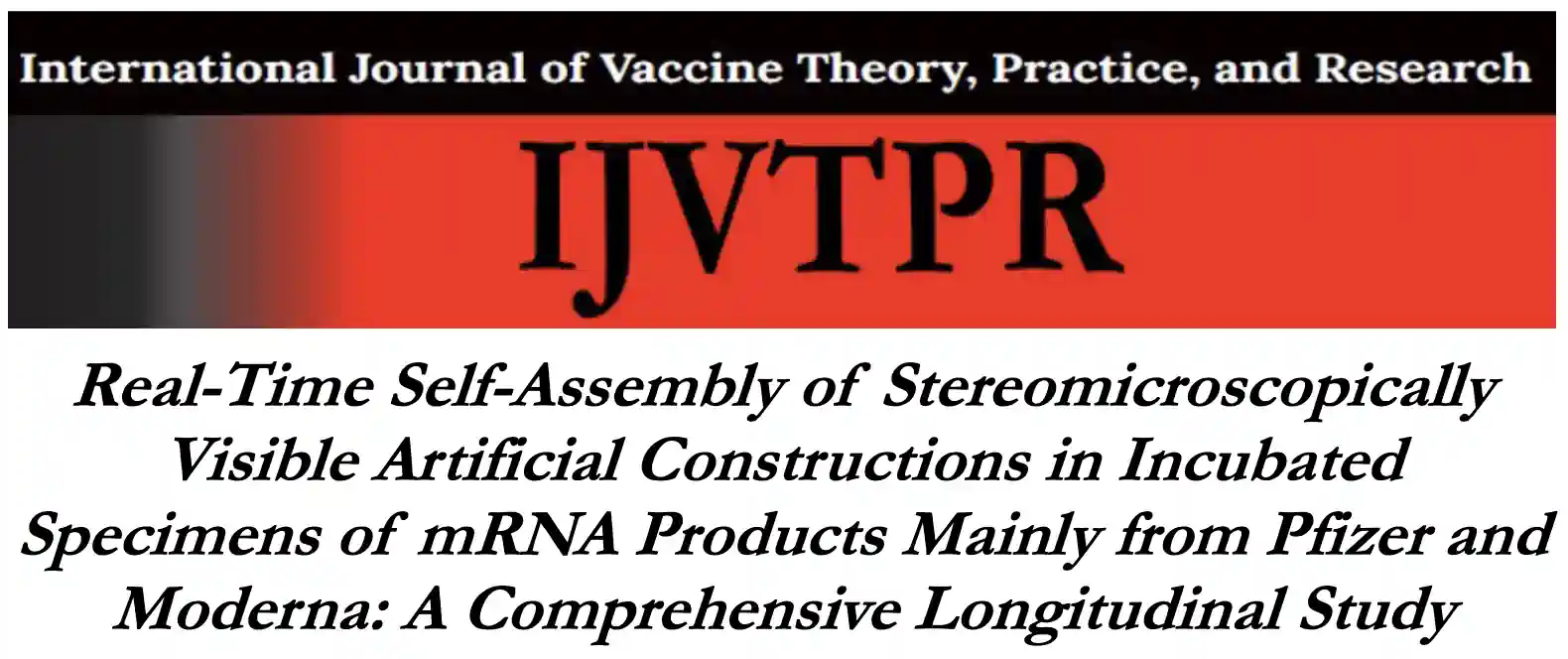(Young Mi Lee, MD: Practicing physician with a specialtyinObstetrics and Gynaecology,Hanna Women’s Clinic, Doryeong-ro 7, KumSung Building, 2ndFloor, Jeju, Jejudo, 63098, Republic of Korea, Tel: +82-64-711-7717, email: youngmil95@gmail.com(ORCID: 0000-0002-1210-4726)
(Daniel Broudy, PhD: Professor of Applied Linguistics, Okinawa Christian University, Nishihara-cho, Okinawa 903-0207, Japan, email: dbroudy@ocjc.ac.jp(ORCID: 0000-0003-2725-6914)
Abstract
Systematic analyses of observable real-time injuries at the cellular level in recipients of the “safe and effective” COVID-19 injectables are published herein a peer-reviewed context for the first time.The global administration of these often-mandated products from late 2020 triggered a plethora of independent research studies of the modified RNA injectable gene therapies, most notably those manufactured byPfizer and Moderna. The contents of COVID-19 injectables were examined under a stereomicroscope at up to 400X magnification. Carefully preserved specimens were cultured in a range of distinct media to observe immediate and long-term cause-and-effect relationships between the injectables and living cells under carefully controlled conditions. From such research, reasonable inferences can be drawn about observed injuries worldwide that have occurred since the injectables were pressed upon billions of individuals. In addition to cellular toxicity, our findings reveal numerous —on the order of 3~4×10^6 per milliliter of the injectable—visible artificial self-assembling entities ranging from about 1to 100μm,or greater,of many different shapes. There were animated worm-like entities, discs, chains, spirals, tubes, right-angle structures containing other artificial entities within them, and so forth. All these are exceedingly beyond any expected and acceptable levels of contamination of the COVID-19 injectables, and incubation studies revealed the progressive self-assembly of many artifactual structures. As time progressed during incubation, simple one-and two-dimensional structures over two or three weeks became more complex in shape and size developing into stereoscopically visible entities in three-dimensions. They resembled carbon nanotube filaments, ribbons, and tapes, some appearing as transparent, thin, flat membranes, and others as three-dimensional spirals, and beaded chains. Some of these seemed to appear and then disappear over time. Our observations suggest the presence of some kind of nanotechnology in the COVID-19 injectables.
IJVTPRKeywords: mRNA, modified RNA, COVID-19 vaccineincubation,stereomicroscopic examination, nanotechnology

